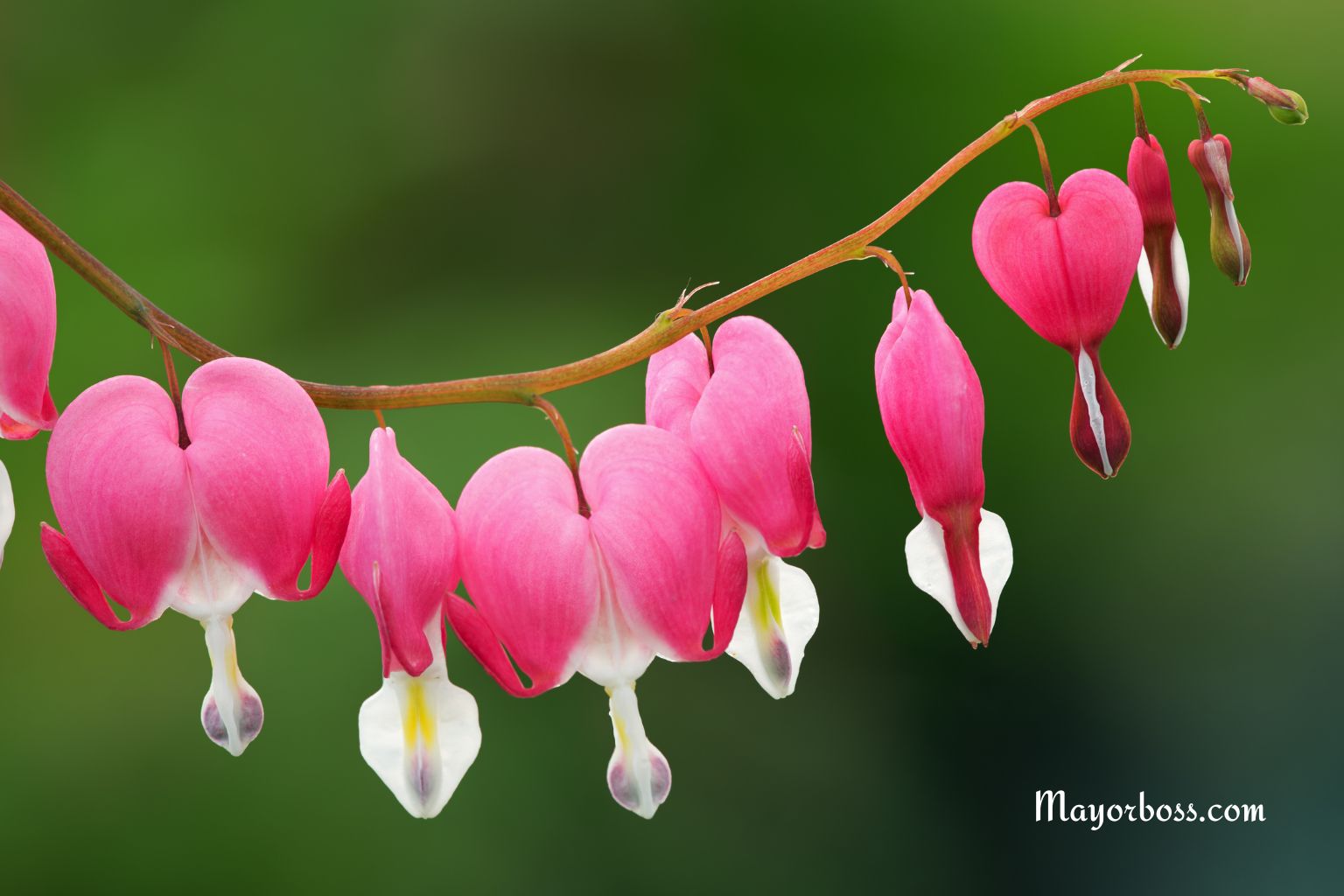How to Grow Bleeding Hearts
To grow bleeding hearts, plant them in partial shade with moist, well-draining soil, keep the roots cool, and water regularly. Mulch and protect from strong sun. Bleeding hearts thrive in cool, shady spots and bloom each spring with heart-shaped flowers.

The bleeding heart plant is a classic favorite in many gardens. With its delicate, heart-shaped flowers and graceful arching stems, it always draws attention. If you want to add a romantic touch to your garden, bleeding hearts are an excellent choice. Let’s look at how you can grow them successfully, even if you’re just starting out.
What Are Bleeding Hearts?
Bleeding hearts, or Dicentra spectabilis, are perennial plants. They get their name from their unique flowers, which look like tiny hearts with a drop beneath each one. These flowers usually appear in spring and early summer, hanging down in rows along arching stems. The leaves are fern-like and soft, adding texture to any shade garden.1

Choosing the Right Spot
Bleeding hearts prefer cool, shady spots. Direct, hot sunlight can stress the plant and cause the leaves to yellow or burn. The best place for your bleeding heart is under the light shade of trees or on the north side of your house, where the sun is less intense.
If your only option is a sunnier spot, try to pick a location where the plant will get morning sun but will be shaded during the hottest part of the day. Too much sun dries out the soil and weakens the plant.
Preparing the Soil
Soil makes a big difference in how well bleeding hearts grow. These plants need rich, moist, well-draining soil. They don’t like to sit in water, but they also don’t like to dry out. Before planting, mix in compost or well-rotted manure to help hold moisture and provide nutrients. Good soil preparation is the key to healthy growth.
If your soil is heavy clay, loosen it with compost or peat moss to improve drainage. Sandy soil needs more organic matter to hold water and keep the roots moist.
Planting Bleeding Hearts
You can plant bleeding hearts from bare roots or potted plants. Spring and fall are the best times for planting.
Steps for Planting:
- Dig a hole twice as wide as the root ball and deep enough so the crown of the plant (where roots meet stems) sits just at soil level.
- Gently set the plant in the hole.
- Fill in around the roots with soil, pressing down gently to remove air pockets.
- Water thoroughly to settle the soil.
- Add a layer of mulch to help retain moisture and keep the roots cool.
Watering and Mulching
Bleeding hearts like consistent moisture. Water them regularly, especially during dry spells. The soil should be damp but not soggy. If the plant wilts, check if the soil is too dry or too wet.
Mulch is very helpful. Spread a 2- to 3-inch layer of organic mulch, like shredded bark or compost, around the plant. This helps keep the soil cool and moist. Mulch also discourages weeds and protects the shallow roots.
Fertilizing
Bleeding hearts don’t need heavy feeding. If you added compost when planting, that’s usually enough. In early spring, you can sprinkle a slow-release, balanced fertilizer around the plant. Avoid fertilizers high in nitrogen, as they promote leaf growth at the expense of flowers.
Pruning and Care
After the plant blooms, the leaves may start to yellow and die back as summer heats up. This is normal. Once the foliage turns yellow, you can cut it back to the ground. Don’t cut the leaves while they’re still green—your plant needs them to store energy for next year.
Remove faded flowers if you want to keep the plant tidy, but it isn’t necessary for the health of the plant.
Pests and Problems
Bleeding hearts are usually not bothered by pests. Occasionally, you may see aphids or slugs. Hand-pick slugs or use a safe organic slug bait if needed. Aphids can be washed off with a gentle spray of water.
Root rot is the main problem, which happens if the soil stays too wet. To prevent this, always plant bleeding hearts in well-draining soil and avoid overwatering.
Overwintering
Bleeding hearts are hardy in USDA zones 3–9. In winter, they go dormant and disappear underground. In spring, new shoots will appear. Mulching in late fall can help protect the roots from deep freezes, but most established plants survive cold winters without extra care.
Propagating Bleeding Hearts
You can grow more bleeding hearts by dividing large clumps in early spring or fall. Lift the clump, gently pull apart the roots, and replant them right away. Make sure each section has healthy roots and at least one growing bud.
Companion Plants
Bleeding hearts pair well with other shade-loving plants like hostas, ferns, astilbe, and lungwort. These companions help fill the space when bleeding hearts die back in summer, keeping your garden looking full.
FAQs
1. Can bleeding hearts grow in full sun?
No, they prefer partial to full shade. Too much sun causes stress and leaf burn.
2. How often should I water bleeding hearts?
Keep the soil consistently moist, especially during dry periods. Water when the top inch of soil feels dry.
3. Do bleeding hearts come back every year?
Yes, they are perennials. They die back in summer and return each spring.
4. Can I grow bleeding hearts in containers?
Yes, use a large container with good drainage and keep it in a cool, shady spot.
5. Are bleeding hearts toxic to pets?
Yes, all parts of the plant are toxic if eaten by pets or humans. Keep out of reach of children and animals.






